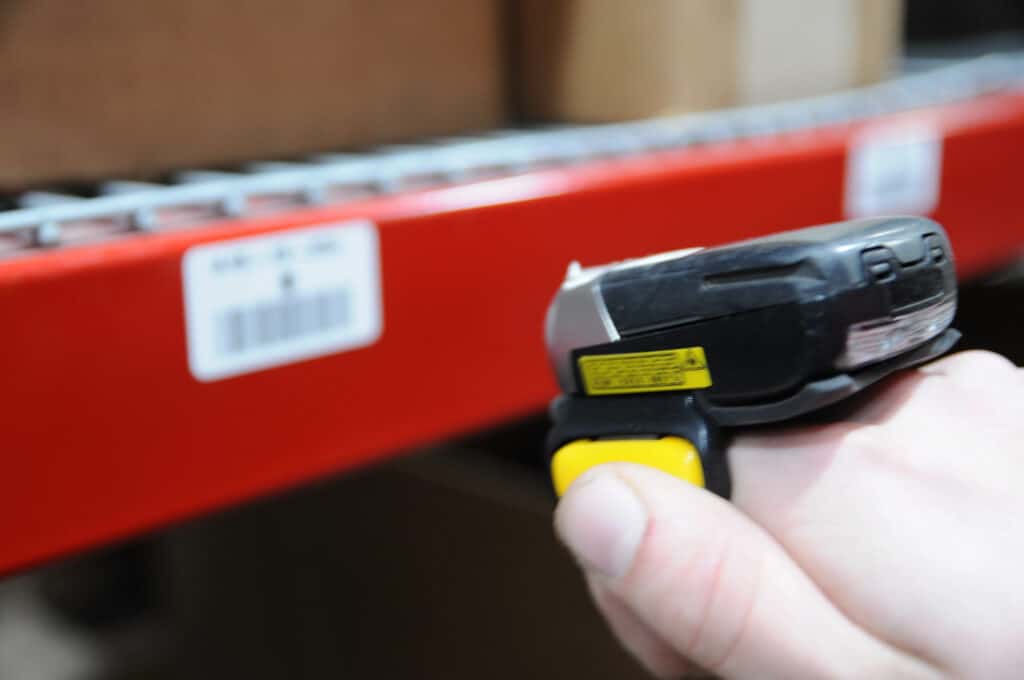SKU is short for stock keeping unit. SKU numbers help you automate inventory management. For new eCommerce sellers, SKU numbers aren’t a requirement. As your business grows, however, you will find that SKUs help you understand sales trends and grow your business. You can use them to better understand your customers and project future sales.
Here’s our guide to everything you need to know about SKU numbers.
What is a SKU?
A stock keeping unit (SKU) is a combination of numerals and letters that identifies a particular product. You create the SKU numbers for your products. That means you can define a taxonomy so that each number gives you important information about the product. Each stock keeping unit has 8 to 12 characters. SKUs are particularly important for online retailers. When you manage an online business, you don’t have the same control of the point of sale that brick-and-mortar retail does. You need to track your inventory remotely. SKUs help.

How is a SKU different from a UPC code?
You will see a UPC, or universal product code, on the labels of most products. The universal product code comes with a barcode that allows bar code scanners to identify the product.
Unlike SKUs, UPC codes are assigned by a third party. Since you assign your own SKUs, a SKU number that you come up with might be the same as one used by another online retailer. However, universal product codes are unique. No two products have the same UPC.
UPC codes often come from the brand or manufacturer. If you manufacture your own brands, you can purchase UPC codes from Bar Code Graphics, the US Barcode Authority.
The difference is best explained with examples. Let’s say you sell white infant onesies. You buy onesies from two different brands, but you sell them interchangeably in your online store. Each brand would have a different UPC code for its onesie. You could, in theory, assign both onesies to the same SKU because you sell them as the same item. (But you would probably give them different SKUs to facilitate reordering.)
On the other hand, you may sell slow cookers that come in a range of colors. The cookers all have the same UPC code. You could give all the cookers the same SKU. But perhaps color is important to your customers. In that case, you can assign each color a different SKU to help you pinpoint your best sellers.
How to create your own system of SKU numbers
SKU numbers are made up of capital letters and numerals. They most often start with letters. It’s a good idea to avoid using zeros because they can be mistaken for the letter O. The same is true with the number one and the letter I. You shouldn’t use special characters in your SKUs, but you can separate sets of numbers within a SKU with hyphens, e.g. 123-456-789. Each of your products needs a unique SKU within your system.
Every character in each SKU should be meaningful to you. Each letter and number identifies a product characteristic that is important to you.
For example, let’s say that you sell two types of champagne glasses: flutes and coupes. Your SKU numbers might start with CF for the champagne flute and CC for the champagne coupe. That is the most important aspect of each product. The rest of your SKU can include information such as the manufacturer of the glass, the size, and other identifying details. SKU CF228356 might signify a champagne flute size 2 (medium), from manufacturer 283, style 56.
When you create SKUs, focus on the aspects of each product that are most important to you and to your customers. If you sell clothing, use unique SKUs for different sizes. For products with printed designs, use the SKU to identify the pattern.
You can generate your own SKUs by hand and keep them in a spreadsheet. If you sell very many items, however, you’ll probably want to use a free SKU generator such as the one offered by Trade Gecko.
Does Shopify require SKU numbers?
It’s up to you whether you want to use SKUs for your business. Shopify doesn’t require them. However, if you sell on Shopify or another eCommerce platform, SKUs can help you determine ideal inventory levels and when to reorder.
Does Amazon require SKU numbers?
If you are using the Amazon marketplace, each of your products must have a UPC code or an EAN (European Article Number). If you don’t have a universal code for a product, you’ll need to purchase one.
You don’t have to create your own SKUs before you list your products on Amazon. Amazon will automatically create an ASIN (Amazon Standard Identification Number) for items other than books. Amazon uses the ISBN number as the ASIN for books. You can use ASINs instead of SKUs. But you should really assign your own SKU numbers. Here’s why.
SKU numbers can boost your eCommerce business
You might be wondering if you even need SKU numbers. After all, your products already have UPC codes. Another number might seem like overkill.
However, SKUs that are meaningful to your business can help you manage everything from inventory to demand forecasting. Each SKU number encodes a valuable piece of data about your sales and your online store. Here are just a few of the benefits that retailers get from using SKUs.
Inventory management
SKU numbers help you to automate your inventory management. Because you can store very specific and detailed information in a few characters, you can more easily track what items are running low and need to be reordered.
SKUs also help prevent inventory errors. This is particularly useful if you have two products that look similar. You don’t want to place an order for more of your $40 champagne coupes when it’s actually the $20 coupes that sold out.

Because SKUs make tracking your inventory easier, they can save you both time and money.
Track sales trends
To grow your eCommerce business, you need to understand your sales trends. SKU numbers help you identify patterns for inventory planning. They allow you to analyze all aspects of your sales. That includes what colors are selling, the seasonality of an item, and changes in customer shopping patterns. With the help of eCommerce software, SKUs also make it easier to plan for the future. Ordering the right amounts of the right products can make the difference between making a profit and running in the red. Understanding your ideal inventory levels is easier when your products have SKUs.
Manage returns
Returns are a fact of life in eCommerce. Your SKU system can help get returned items back on the right shelf. That can prevent future picking and packing mistakes that can lead to more returns. Plus, you’ll be able to track trends in returns. That can assist you in making better ordering choices in the future.
Work more efficiently with your fulfillment center
As your business grows, you may want to explore 3rd party fulfillment options. You’ll work with your 3PL services company to manage your inventory. You won’t be able to eyeball your stock to determine reorder levels. SKUs can help you keep tabs on your products as they move in and out of the fulfillment warehouse.

At Red Stag Fulfillment, we use scanners and codes to identify every spot in our warehouse. That allows us to track each SKU as it moves from the shelf to the picking tray to the packing station. We know the value of good inventory management practices, and we are always happy to help you save money by refining your safety stock and reorder levels.










